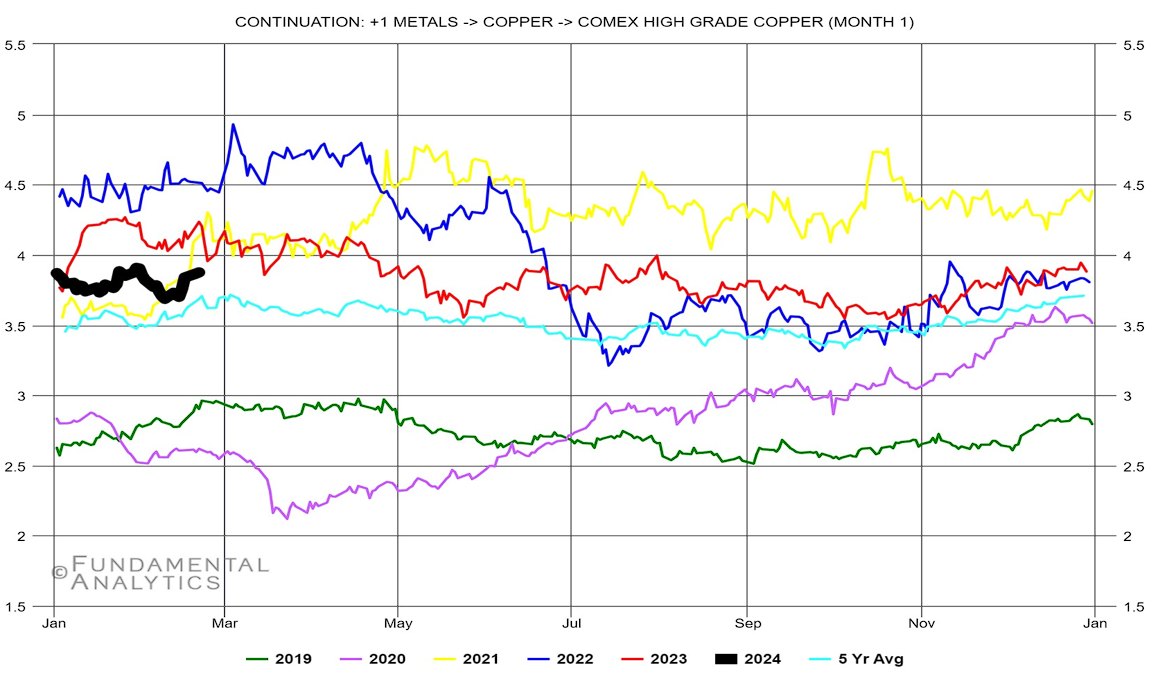Andreas Anastasiadis
Gold futures are moving higher for the fifth consecutive session (as of the close of March 6th), hitting an all-time high after falling to the $1,850 mark in October 2023. Gold futures are now standing above $2,150/ounce. The YTD return has already exceeded +4.2%, and the current price of the March contract is +16.4% higher compared to the previous year, and above the 5-year average by an impressive +26%.

The market has shown bullish resilience despite the diminishing likelihood of an early US rate cut, and occasionally it has even advanced despite the observed strength of the US dollar. Looking at the driving factors that significantly influence the gold market, investors should pay attention and be cautious. Firstly, the expectations that main central banks (the Fed and the ECB) are going to cut rates at some point this year help to hold gold at an all-time high level. Secondly, global tensions are being elevated day by day, giving extra support to gold futures to remain high. Last but not least, the US market may begin slowing, taking into consideration the latest data. According to the Institute for Supply Management (ISM), activity in the services sector expanded in February for the 14th consecutive month. The ISM Services PMI, however, printed at 52.6, contracting from the previous 53.4 and missing expectations of 53.1. Additionally, January factory orders fell by 3.6% MoM, worse than the 2.9% contraction expected.
On the other hand, speculators seem to have a different view of the gold market. The net money-managed funds position, as published by the Commitments of Traders for the last week of February, revealed a 75,000 contract drop from where it was at the beginning of the year. The current level of the net money-managed funds position is slightly lower than in 2019. Currently, Fed fund futures imply a 69.2% probability for the bank to cut interest rates during its June meeting.

Another factor that investors should take into account before placing their bets or rebalancing their portfolios is the current gold-to-silver ratio. The gold/silver ratio is close to 90 and above the seasonal 5-year average of 82.6. A major factor that keeps the ratio high is the increased purchases of gold by central banks and investors. Central banks, like those in China and Russia, have accumulated gold as Washington has weaponized the dollar.

Figure 3: Gold/silver ratio